Flying Fifteen
FLYING FIFTEEN AT A GLANCE

AN EXCITING, RACING KEELBOAT
The Flying Fifteen is a 2 person, planning keelboat sailed worldwide. The Ovington Flying 15 has been refined for over 35 years and is now built of epoxy resin and carbon fibre. In 2006 we built a new deck mould to fit on the mk10 hull to improve the ergonomics and simplify fit-out. Since then further modifications have been introduced including a choice of non-slip on the foredeck and adjustable mainsheet bridle via longitudinal tubes fitted during construction.
We can supply complete boats ready to sail, part fitted or bare hulls, and have our own keel mould used to win the World Championships in 2011, 2013, 2015, 2019 & 2023.

Association Link flying15.org
Our packages include:
Flying Fifteen Bare Hull (10010)
- Bare, carbon hull
- Jib cleat plinths
- Centre console (2 designs available)
Price: £14,795
£12,329.17 (ex VAT)
Flying Fifteen Complete boat package (Ex Sails)
- Fully fitted, carbon hull with Allen and Harken fitout, includes:
- Padded toestraps
- Foam or painted non-skid floor
- Spinnaker chute or bags
- Console comes with jib halyard, ram forward, ram aft and cunningham
- Side Decks – Spin pole up, jib cars and crew toestrap adjustment
- Kicker under mainsheet on Harken due-cam
- Ovington Keel
- Selden Mast and Boom (Alto or Epsilon)
- Carbon fibre spinnaker pole
- Carbon tiller and extension
- Breathable top cover
- Breathable under cover
- Padded rudder bag
- Road Trailer, EU certified
Extras and Upgrades
Jib sheet ratchet blocks
Adjustable helm toestraps via cleat on aft cockpit bulkhead
Spinnaker halyard crane
Mainsheet bridle adjustable (including fitting of tubes during construction) rigged

Buoyancy bag 125L

Anchor plate flat w/ferrule S/S

F15 Cleat shelf – Moulded

HD Maststep assembly
Looking for something else, we sell parts & spares.
From sails to rigging, mast fittings and covers.
TERMS & CONDITIONS

- CLASSIFIEDS
- NEWSLETTERS
- SUBMIT NEWS

Flying Fifteen
Designed in 1947 by the legendary Uffa Fox, the Flying Fifteen has maintained its reputation as an exciting, competitive two person racing boat. The lines still have a timeless quality and the clever keel shape allows easy launching & retrieval without cranes or lifting of keels. The Flying Fifteen is a fun, fast and exhilarating boat to sail by crew combinations of all sizes, genders and ages. The Flying Fifteen has a well established international fleet structure and is sailed in a number of countries around the world spanning lake, estuary and sea venues. The class has a strong international class association, Flying Fifteen International (FFI), which coordinates events, represents the class, circulates a yearbook and regular communications to all members.
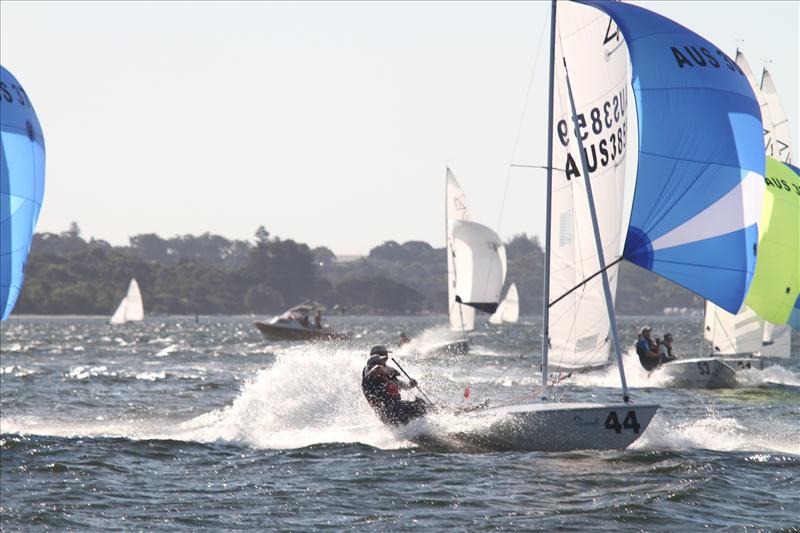
- Latest videos, from 2024
- Oldest videos, from 1950 onwards
Show photos from latest 2024 2023 2022 2021 2020 2019 2018 2017 2016 2015 2014 2013 2012 2011 2010 2009 2008 2007 2006 2005 2004 2003 2002 2001 2000 1999 1998 1997 1996 1995

Great choice! Your favorites are temporarily saved for this session. Sign in to save them permanently, access them on any device, and receive relevant alerts.
- Sailboat Guide
Flying Fifteen
Flying Fifteen is a 20 ′ 0 ″ / 6.1 m monohull sailboat designed by Uffa Fox and built by Fairey Marine Ltd, Stebbings & Sons, Copland Boats, Ovington Boats Ltd., Chippendale Boats, Halmatic Ltd., Rob Legg Yachts Ltd., and Windrush Yachts starting in 1948.
Rig and Sails
Auxilary power, accomodations, calculations.
The theoretical maximum speed that a displacement hull can move efficiently through the water is determined by it's waterline length and displacement. It may be unable to reach this speed if the boat is underpowered or heavily loaded, though it may exceed this speed given enough power. Read more.
Classic hull speed formula:
Hull Speed = 1.34 x √LWL
Max Speed/Length ratio = 8.26 ÷ Displacement/Length ratio .311 Hull Speed = Max Speed/Length ratio x √LWL
Sail Area / Displacement Ratio
A measure of the power of the sails relative to the weight of the boat. The higher the number, the higher the performance, but the harder the boat will be to handle. This ratio is a "non-dimensional" value that facilitates comparisons between boats of different types and sizes. Read more.
SA/D = SA ÷ (D ÷ 64) 2/3
- SA : Sail area in square feet, derived by adding the mainsail area to 100% of the foretriangle area (the lateral area above the deck between the mast and the forestay).
- D : Displacement in pounds.
Ballast / Displacement Ratio
A measure of the stability of a boat's hull that suggests how well a monohull will stand up to its sails. The ballast displacement ratio indicates how much of the weight of a boat is placed for maximum stability against capsizing and is an indicator of stiffness and resistance to capsize.
Ballast / Displacement * 100
Displacement / Length Ratio
A measure of the weight of the boat relative to it's length at the waterline. The higher a boat’s D/L ratio, the more easily it will carry a load and the more comfortable its motion will be. The lower a boat's ratio is, the less power it takes to drive the boat to its nominal hull speed or beyond. Read more.
D/L = (D ÷ 2240) ÷ (0.01 x LWL)³
- D: Displacement of the boat in pounds.
- LWL: Waterline length in feet
Comfort Ratio
This ratio assess how quickly and abruptly a boat’s hull reacts to waves in a significant seaway, these being the elements of a boat’s motion most likely to cause seasickness. Read more.
Comfort ratio = D ÷ (.65 x (.7 LWL + .3 LOA) x Beam 1.33 )
- D: Displacement of the boat in pounds
- LOA: Length overall in feet
- Beam: Width of boat at the widest point in feet
Capsize Screening Formula
This formula attempts to indicate whether a given boat might be too wide and light to readily right itself after being overturned in extreme conditions. Read more.
CSV = Beam ÷ ³√(D / 64)
The basic design hasn’t changed over the years but development has occured in the rig and construction of the hull. Fleets exist in Australia, Hong Kong, Ireland, New Zealand, South Africa as well as the British Isles.
Embed this page on your own website by copying and pasting this code.
- About Sailboat Guide
©2024 Sea Time Tech, LLC
This site is protected by reCAPTCHA and the Google Privacy Policy and Terms of Service apply.


Search form

Thrilling Sailing on a Flying Fifteen

For the most fun per dollar I’ve spent, one sailboat with which to enjoy Maine’s waters has exceeded all others: the Flying Fifteen.
English designer Uffa Fox, in his book Sailing Boats (George Newnes Limited, 1959), related that while lazing in his bathtub he conceived the design and sketched it on a handy magazine. An enthusiast of the exciting performance of the International 14 dinghies, which are centerboarders, he sought similar thrills for older sailors in a boat that would not capsize. He succeeded. Today, the on-line Flying Fifteen blog trumpets this high praise: “Flying Fifteens—The Most Fun You Can Have With a Keel On!”
Under a rig similar to that of the International 14s, Fox created one of the early planing keel boats by giving the Flying Fifteen a long, light, narrow hull with shallow, flattish sections, a fin keel, and spade rudder. Long-ended, the waterline length is 15 feet, the overall length 20 feet, and the draft 2 ½ feet. The beam is 5 feet. The boat weighs approximately 700 pounds, 400 of that being the keel.
About 4,000 Flying Fifteens have been built since the class appeared in 1948, and new boats are still available. Early boats were wooden, some built by amateurs. The vast majority are fiberglass. With multiple builders over the years and Uffa Fox’s authorization of some changes in original specifications, the boats are not all identical. Polyester fiberglass has been supplanted in recent years by vacuum-bagged epoxy E-glass foam construction and carbon. Visually obvious are the variations in cockpit layouts and rigging hardware. An earlier boat I sailed had much more weather helm than the 1976 boat I own. Today, early boats are called “Classics,” later boats are in the “Silver” fleet, and the newest are “Gold,” but older boats remain permitted to race with newer boats tricked out with the latest go-fast gear.
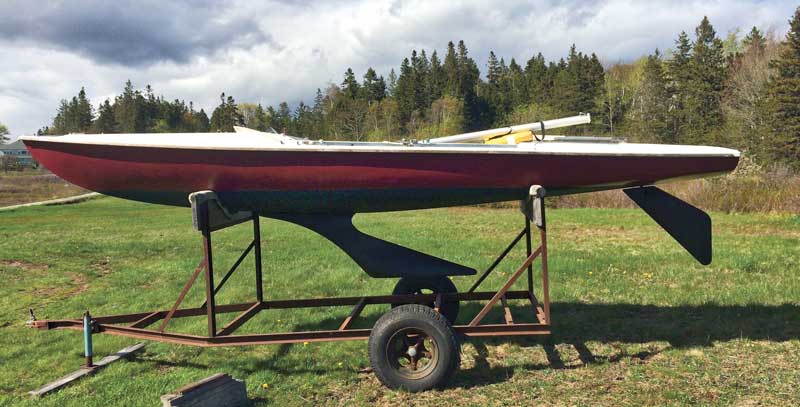
To my knowledge, Maine has the only fleet in North America, at Sorrento on Frenchman Bay. But after they were introduced, Flying Fifteens became widely popular across the then British Commonwealth, spurred by Britain’s Prince Philip, who was an avid racer. Today a web search finds active class associations in England, Ireland, France, Belgium, Spain, Hong Kong, Australia, and New Zealand. Their popularity in Frenchman Bay began when an enthusiastic sailing couple bought one, and then an extended family nearby opted for a family fleet. Various members of the Sorrento Yacht Club saw the boats, were smitten, and brought quite a few more to local waters.
Flying Fifteens had been sailing in Sorrento for about 30 years when, in the mid-1990s, I bought one and moved it to Brooklin, not to race but to use as a “sports car” daysailer. I only paid $2,500 for the fiberglass boat and its trailer and have maintained it myself since. On Eggemoggin Reach it continues to thrill me with its ability to move in zephyrs, and take off in a breeze. In smooth water the low freeboard and the unusually intense wh-i-sh-sh of the bow wave enhance a wonderfully rewarding sense of speed.
Usually alone, I cannot hold the boat down as well as a racing crew of two. Fortunately, the overlapping jib rolls up quickly, and a Flying Fifteen sails exceptionally well under just the mainsail. Nonetheless, without the weight of a crew member, a stiff summer breeze can be overpowering even when I’m leaning way out with only my toes under hiking straps keeping me on the boat. I keep abreast of wind forecasts, and when in doubt, I sail a heavier boat.
Uffa Fox’s design for the fin keel is startlingly eye-catching, although my boat’s relatively wide pointing angle while making considerable leeway suggests the keel’s hydrodynamic efficiency could stand improvement. The cast iron fin has a very short chord at the top, getting longer with depth as it rakes aft until it merges into the bulb at the bottom. More weight on the windward rail keeping the boat flatter in a breeze would help, but for my non-racing purposes the sagging to leeward makes little difference.

Flying Fifteen racing in Sorrento eventually petered out. But about 20 years ago my youngest daughter, Chafee, creative and entrepreneurial, determined to revitalize the racing by adding to the fleet. While briefly working in London after college, she scoured England for used Flying Fifteens. She sent two container loads carrying eight or nine boats and trailers across the Atlantic, and had some success selling them to people in the Sorrento area. But she was unable to revive the active racing fleet.
I asked Chafee why she became so interested in Flying Fifteens. Her answer captured their essence. She liked them because having keels, not centerboards, they were sporty boats suitable for Maine’s dangerously cold water. Back when Uffa Fox designed them, that was unusual, but in the years since many more such designs have appeared.
Indeed, there are sporty alternatives now, but why switch? Ever more cognizant of the crucial need to avoid wasting our planet’s resources, I like to use and enjoy what I have, especially when it is so satisfying.
Ben Emory splits his time between Salisbury Cove and Brooklin, Maine. His book Sailor for the Wild—On Maine, Conservation and Boats was recently published by Seapoint Books.
Related Articles

Share this article:

Digital Edition Available ×
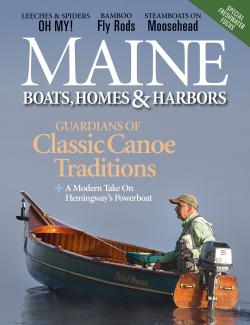
Can't get to the store to buy your magazine? We deliver the stories of Maine's coast right to your inbox. Sign up here for a digital edition .
2023 Maine Boat & Home Show ×

Join Us for the Maine Boat & Home Show !
Art, Artisans, Food, Fun & Boats, Boats, Boats
August 11 - 13, 2023 | On the waterfront, Rockland, Maine
Click here to pre-order your tickets.
Show is produced by Maine Boats, Homes & Harbors magazine.
FLYING FIFTEEN
One evening, fifty years ago, as he lay in his bath at home in Cowes Uffa had a vision of a radical new small boat: "The FLYING FIFTEEN in all her glory marching in triumph before a stiff nor'wester". He rushed from bath to drawing board and put the vision on paper there and then - the hull, the keel, the rudder, the sail plan. What would Uffa think of his Flying Fifteen now? After fifty years of changing ideas and technologies, the boat that is built and raced now is rather different. In the 1960s aluminium spars, cold moulded hulls and terylene cloth made their impact. In the 1970s GRP hulls became the norm and, in the '80s and '90s, new materials and techniques allowed still further developments to take place. Uffa had become upset during the 1960s when Fifteens appeared with features not in his original design. The generous measurement tolerances in the original rules were soon being exploited to give more boat speed. Uffa and many of his contemporaries felt strongly that the class was a One Design and that owners should respect that and not push for changes as if it were a restricted class. The class rules had to be tightened up and, to reconcile the designer with the class, compromises were made. The copyright was assigned to the RYA and the class became the National Flying Fifteen. The modern Flying Fifteen may not be exactly like its earlier sisters but in concept it has remained true to Uffa's vision - a fast and exciting keelboat, planing easily and providing great racing. Over 3700 boats have now been built. Quite early on in the class's history, fleets became established in several parts of the world and in 1997 a cosmopolitan fleet of 180 boats descended on Cowes to celebrate the golden jubilee of the class. PLANS The class now has full international status and the official plans are controlled by ISAF(contact the class association). We do however hold a large number of plans that document the progress of the class until the late 1960s when Uffa relinquished control. Among the gems are the original 1947 sail plan with the original class name of 'Dainty Duck' (sail symbol a pair of ducks) - would it have been so successful with that name!? - Uffa's plan of how to transport a boat on and in his Humber car and a full size lines plan (20 feet - the ultimate mural!). There is an account of the flying fifteen in Uffa's book Sailing Boats and also a mention in More Joys of Living. Length Overall 20'-0'' Length WL 15'-0'' Beam Max 5'-0'' Draught 2'-6'' Sail Area (sq feet) 150 Displacement (lb) 1000
If you are interested in any plans please contact us
back to Keelboats
Flying fifteen
The flying fifteen is a 20.0ft fractional sloop designed by uffa fox and built in wood or fiberglass by fairey marine ltd since 1948., 4000 units have been built..
The Flying fifteen is an ultralight sailboat which is a very high performer. It is very stable / stiff and has a low righting capability if capsized. It is best suited as a day-boat.
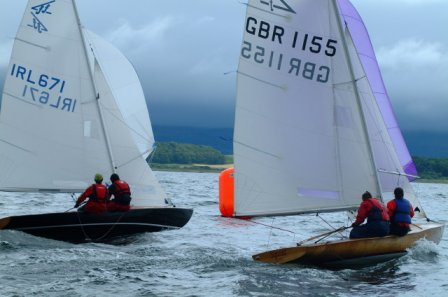
Flying fifteen for sale elsewhere on the web:

Main features
Login or register to personnalize this screen.
You will be able to pin external links of your choice.

See how Sailboatlab works in video

We help you build your own hydraulic steering system - Lecomble & Schmitt
Accommodations
Builder data, modal title.
The content of your modal.
Personalize your sailboat data sheet
Yachting World
- Digital Edition

VX One: could this be a modern keelboat class to match the popularity of Flying 15?
- Matthew Sheahan
- April 20, 2015
So far there has not been a planing keelboat class to touch the Uffa Fox Flying 15. Could the VX One be the one? Matthew Sheahan is impressed

A modern high-performance machine with the ordinary sailor in mind. Photos: Ocean Images
I’ll come straight out with it: there are some boats that hit the spot from the outset and for me the VX One is on that list. In fact, I’ll go further. This two- or three-crew 19ft performance keelboat was my favourite boat of 2014. It is, quite simply, superb.
Bridging the gap between dinghies and keelboats has always been tricky. What’s good for those used to hiking with their well-trained quads, honed stomach muscles and backsides that only feel right if they keep slapping the tops of the waves is not what will appeal to those more used to hiking facing outwards. For this group, draping their bodies over a 4mm wire like washing on a line, occasionally lifting their sea boots over the waves, is the norm. So the switch from keelboats to dinghies has always proved troublesome and conversely the performance downgrade for dinghy sailors has often been equally unappealing.
Yet back in 1947 Uffa Fox figured out how to tempt both camps when he designed the world’s first planing keelboat, the Flying 15.
Blending dinghy performance with keelboat stability, the Flying 15 established a new concept and continues to be the datum in this field, with over 4,000 boats built and a world championship fleet that can still draw up to 100 at a time. There has been no other boat of this type that has been anywhere near as successful. And while many have tried to emulate Fox’s success with a more modern boat, no one has yet succeeded on this scale.
Although the VX One looks nothing like the Flying 15, the comparison is a good way of describing what the boat is all about.
With her wide, shallow and open cockpit, complete with toestraps and a smattering of control lines, the VX One is every bit a modern high-performance machine and yet she’s designed with ordinary racing sailors in mind.
“From the outset I wanted the boat to be light and lively,” says designer Brian Bennett. “I wanted a boat that was good in light airs and outstanding in heavy airs. It also had to be bulletproof, current in terms of design, incorporate modern systems and be easy to handle. But in addition to being the perfect raceboat, it needed to be a fun daysailer where you can take your family for a 15-knot blast.”
Sales talk, you may think, but that is precisely what she delivered. Had I looked at her anticipated Portsmouth Yardstick rating – estimated to be 860-885 which is close to that of a twin-trapeze RS800, or even her IRC at 1.012 (the same as a 32ft JPK 1010) – I would perhaps have been more prepared when we lit the blue touch paper.
But, having joined Bennett aboard his boat for the last day of the inaugural national championships held in Torquay last autumn, I found the sub-eight-knot breeze provided little clue to what she’d be like at full throttle. The real fun came a few weeks later when I borrowed another boat from the builder Ovington Boats and sailed her in more lively conditions out of Lymington.
In around 12-16 knots of breeze with gusts to 18 she lit up downwind, hitting 16 knots with ease. With the bow up and half the boat well out of the water, she not only looked the part, but was a doddle to handle at speed.
With wind against tide, the Solent chop was at its notorious best – short, steep waves set across our track like a deeply ploughed potato field. But with our weight back and her bow up, she made light work of the uneven surface, skipping over each crest effortlessly.
Heeled at speed
On the few occasions that we did faceplant into the back of a wave, we did so because I was trying to sail the boat too upright, as you might a high-performance dinghy. The VX One is different and likes to be heeled slightly at speed in waves to get her onto her aggressive chine. Once there, not only is she developing maximum righting moment and hence power from her hull form, but the rocker in the chine helps her stern to squat down and her bow to rise.
Given her downwind sail area of 46m 2 (495ft 2 ) you might think that she’d be a handful, especially for the crew, and yet the deck layout and control lines have been so well thought-out that she is no more difficult than my own RS400. In some ways she’s easier.

Although both of us were new to the VX One, she was simple to sail at speed straight away
Her spinnaker chute is huge, making for easy hoists and drops using the single recovery line on a two patch arrangement on the kite. The halyard and drop line also deploy and retrieve the carbon bowsprit with ease.
Elsewhere her control line layout throughout is simple and well-executed with control lines that have minimum friction, are led to the right places and are easily accessible. A good example is her self-tacking jib, which includes a simple yet effective barber hauler to change gear in different sea states. Both her jib sheet and barber hauler control lines exit from one swivelling double jammer under the foredeck making them easy to adjust wherever you are.
Upwind she proved stiff and easy to get into the groove and while she likes to be hiked, the shaped side decks make this as easy and comfortable as could be expected.
One detail that does take a little while to get used to is the skiff-style mainsheet system that comes directly off the boom rather than through a cockpit floor-mounted jammer. As any 49er, 29er, or skiff sailor will tell you, there are good reasons why this system works and offers a more efficient way of trimming the mainsail. A floor mounting modification is available, but according to Bennett most crews switch back to boom mounting later.
When handling her ashore, her lifting keel, which is raised using the main halyard, means that she can be launched, recovered and trailed on a combi trailer.
She weighs just 260kg all up – the weight of a Wayfarer with someone sitting in it – making her pretty easy to move around on a decent surface and easy to tow with a normal saloon car. Alternatively, her single-point lift means she can be craned with ease.
Two decades of sportsboat activity has now helped to close the dinghy/keelboat gap and encourage more people to downsize and up-speed, but there is still the issue of the perceived athleticism that is required for anything that has toestraps rather than guardwires. Yet the reality is that you can easily sail this boat without having to hike like an Olympic Gold medallist.
While she was new to the UK and Europe in 2014, the first boat was launched in the USA two years ago and around 100 have already been built to the strict one-design rules.
So for all those facing the wrong way or leaning up against a cold steel rail on the side deck, it really is time to turn around, slip your feet under the toestraps, sheet in and send the VX One downwind. Within minutes you’ll be driving like you’re in the getaway car and grinning from ear to ear.

The simple, uncluttered cockpit of the VX One has been well thought-out. For example, water is shipped through chute drains straight out of the transom. The boom-mounted mainsheet takes a little getting used to

The self-tacking jib also has a single-line barber hauler, which allows the sheeting angle to be changed easily while under way (seen just under the car)

Simple control line layout: red jib sheet and barber hauler, blue kite hoist and pole deployment, yellow kicker. Having controls here keeps the rest of the boat clear
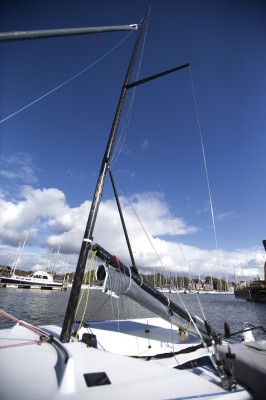
The upside-down kicker strut (Gnav) keeps the forward area of cockpit clear. Single-spreader carbon mast
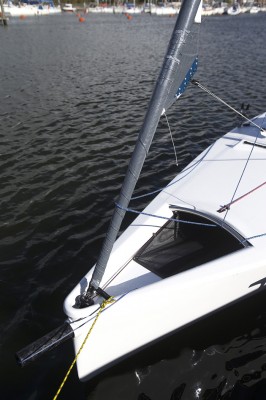
A huge spinnaker chute opening makes for easy hoists and drops. The jib has a roller furler
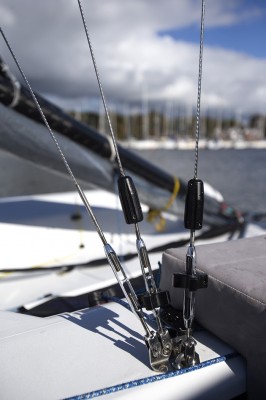
Simple hand adjustments for V1 and D1 shrouds. Lowers are also included to support the mast at Gnav height
Specifications
LOA 5.79m/19ft 0in
Beam 2.20m/7ft 3in
Draught 2.11m/6ft 11in
Displacement 260kg/573lb
Mainsail/jib 19.97m 2 /215ft 2
Spinnaker 26m 2 /280ft 2
Typical crew weight 135 -250kg/297-550lb 2-3 crew
Price £20,408 ex VAT, inc sails, covers and combi road trailer/landing trolley
Designed by: Brian Bennett
Built by: Ovington Boats (UK) Mackay (New Zealand)
This is an extract from a feature in Yachting World March 2015 issue

Flying Fifteen International – Australia

Welcome to the Australian Flying Fifteen Association website.
“The Original Sports Boat”
A Flying Fifteen is the original sports boat, as it is a planing keelboat. There are more than 4100 Flying Fifteen’s around the world, and are suitable for racing on a variety of sea, estuaries, lakes and rivers.
In Australia there are 15’s in most states and you can find contacts under the Where We Sail tab.
There is an annual National Championship where sailors compete for the Coweslip Trophy presented by HRH The Duke of Edinburgh. In addition most states have their own state championship as well as regular club racing.
“On the global scene every second year there is a World Championship which rotates between Continents. On the in-between years there is a European Championship.
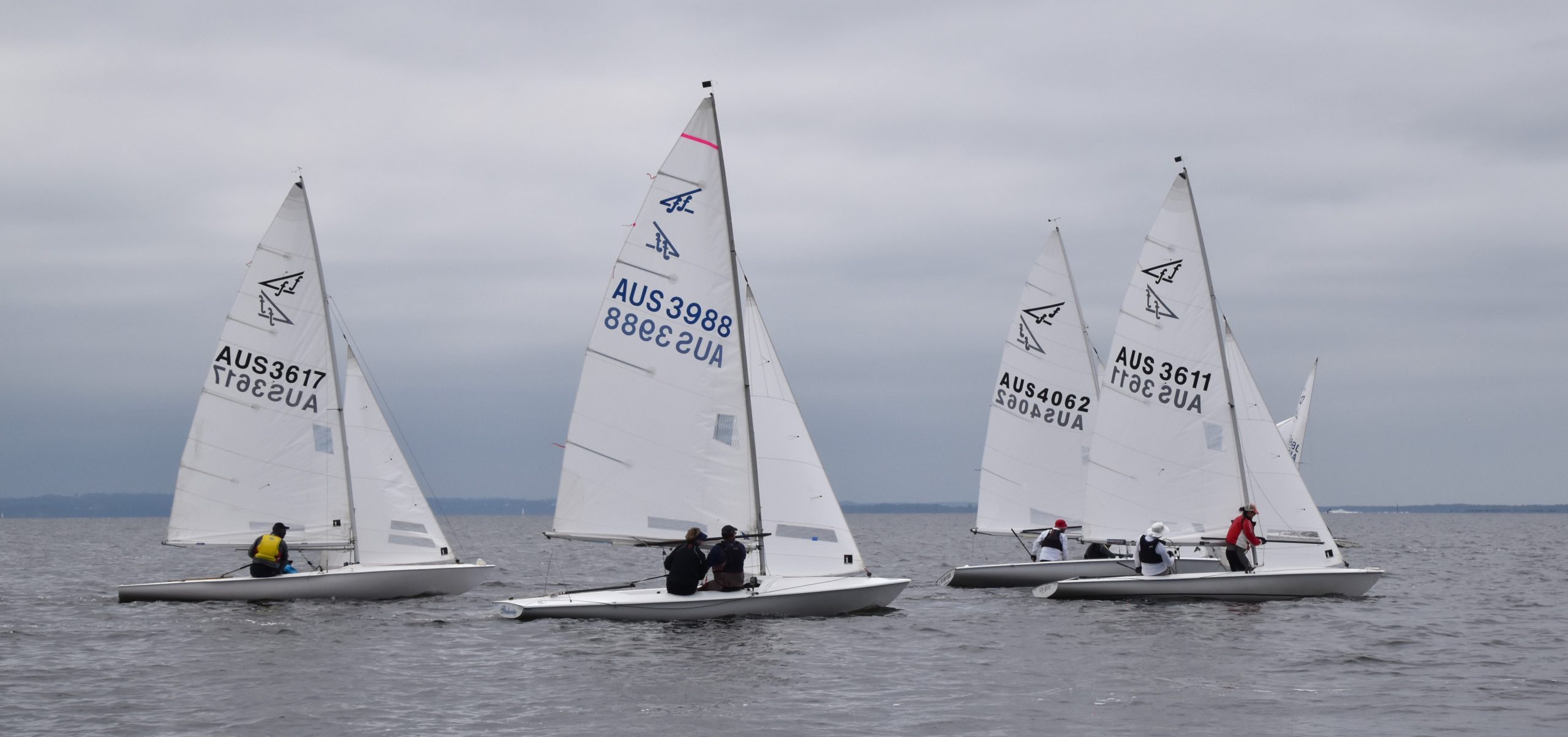
photos by John Dingley (GLYC)
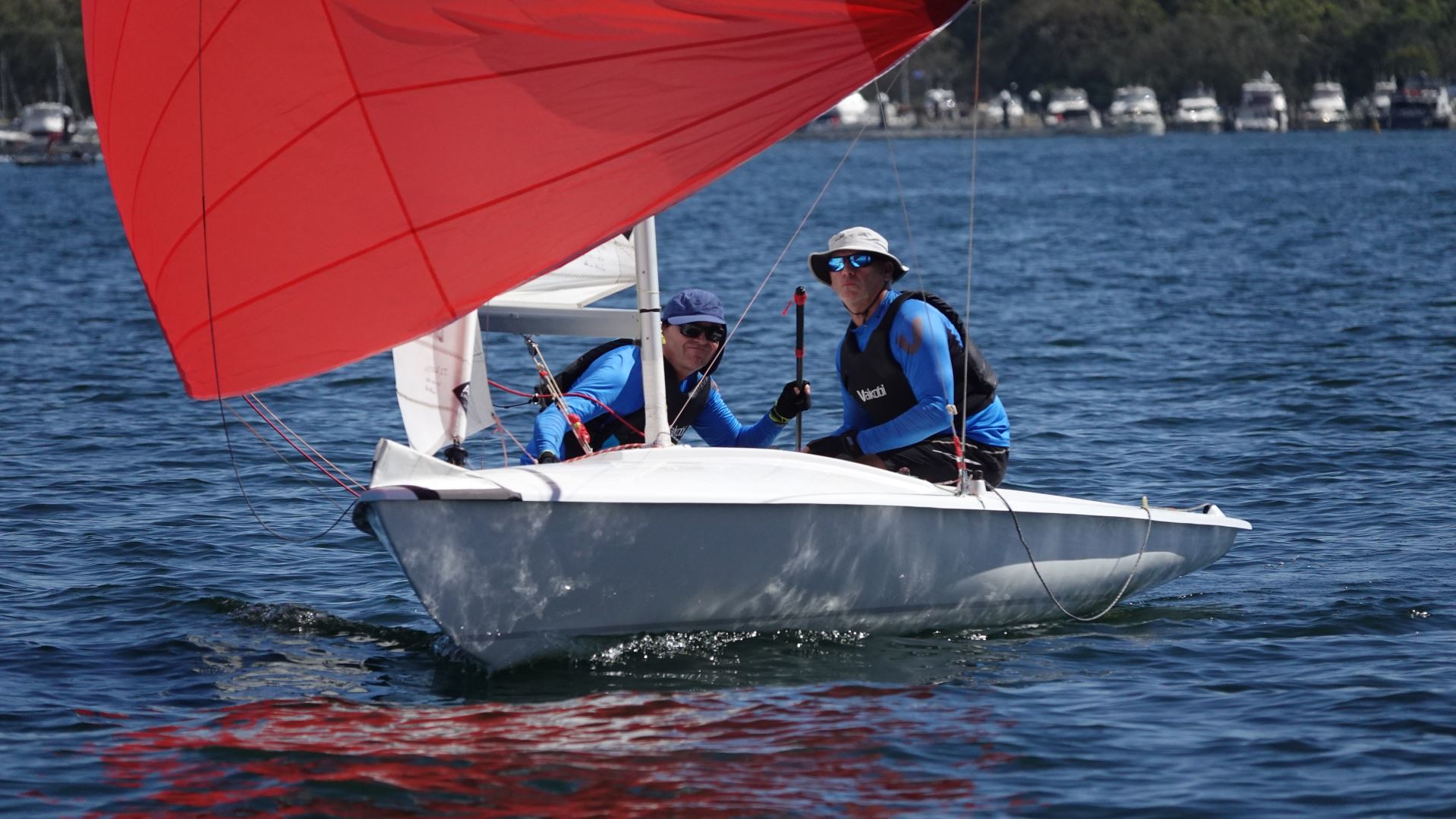
Tally Hobbs is celebrated as the man who established the Flying Fifteen class in Western Australia back in the early 1950’s
AUS 3982 For Sale
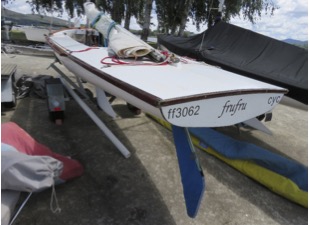
Flying Fifteen International AUS 3062 Fru Fru Fully equipped and ready to sail. Trailer fully registered. Current Owner FFI-ACT Association Mob: 0457774271 $ 2,500 ono
Flying Fifteen International Flying Fifteen Victoria Flying Fifteen Western Australia Flying Fifteen Queensland (Facebook) Flying Fifteen UK Flying Fifteen NZL Flying Fifteen HKG Flying Fifteen IRL Flying Fifteen FRA/BEL Flying Fifteen ESP Australian Sailing
Videos from 2023 Endeavour Homes Australian Championship
FFI Training Videos


Flying Fifteen FF15
Used boats for sale, trailer boats - monohull, flying fifteen boats for sale.

IMAGES
VIDEO
COMMENTS
Belgium Championship SNEH, Lac de la Plate Taille, Belgium. 9 - 22 August 2025. FFI 24th World Championship, International Regatta & UK Championship, Weymouth & Portland Sailing Academy, England, UK. The Flying Fifteen is a racing keelboat sailed in many countries around the world. It celebrated 75 years in 2022.
The Flying Fifteen has been modernized over the years with Uffa Fox agreeing to changes towards the end of his life to improve the design specification and sail plan. Original hull tolerances were +/- 25mm (one inch) either side of the median plan lines. In 1984 Flying Fifteen International reduced the hull tolerances to +/- 15mm and introduced ...
The Flying Fifteen is a 2 person, planning keelboat sailed worldwide. The Ovington Flying 15 has been refined for over 35 years and is now built of epoxy resin and carbon fibre. In 2006 we built a new deck mould to fit on the mk10 hull to improve the ergonomics and simplify fit-out. Since then further modifications have been introduced ...
The Flying Fifteen is a British sailboat that was designed by Uffa Fox as a one design racer and first built in 1948. [1] [2] [3] The design has been a World Sailing international class since March 1981.
Flying Fifteen. Designed in 1947 by the legendary Uffa Fox, the Flying Fifteen has maintained its reputation as an exciting, competitive two person racing boat. The lines still have a timeless quality and the clever keel shape allows easy launching & retrieval without cranes or lifting of keels. The Flying Fifteen is a fun, fast and ...
Flying Fifteen is a 20′ 0″ / 6.1 m monohull sailboat designed by Uffa Fox and built by Fairey Marine Ltd, Stebbings & Sons, Copland Boats, Ovington Boats Ltd., Chippendale Boats, Halmatic Ltd., Rob Legg Yachts Ltd., and Windrush Yachts starting in 1948.
All you need to know to build your own Flying 15! Menu. Home; News; The Flying Fifteen. Flying Fifteen Development; Specifications; The Flying Fifteen mould; History. Past Officers; Uffa Fox Medalists; Uffa Fox Story; ... Boat Register. Definition of Classic Boats; BR 1 - 500; BR 501-1000; BR 1001-1500; BR 1501-2000; BR 2001 - 2500; BR 2501 ...
As such all National Class Associations were federated under Flying Fifteen International. In the UK in the late 1970's and early 80's, British boat builders and designers developed moulds over a number of years which exploited the use of the hull tolerances to extend the waterline length of the boat.
The Flying Fifteen (or F15) is a two-person sailing dinghy. The F15 is a keelboat, designed for racing. The keel is quite big and heavy, so capsizes are very rare. Upwind, the F15 uses the Main Sail (at the back), and the Jib or Foresail (up front). Downwind, the spinnaker is hoisted, making it a three-sail boat.
Under a rig similar to that of the International 14s, Fox created one of the early planing keel boats by giving the Flying Fifteen a long, light, narrow hull with shallow, flattish sections, a fin keel, and spade rudder. Long-ended, the waterline length is 15 feet, the overall length 20 feet, and the draft 2 ½ feet. The beam is 5 feet.
The Flying 15 was designed by Uffa Fox in 1947 and the first hulls built at his Cowes based boatyard. Uffa recounts in his 1959 book, "Sailing Boats" that Jimmy Damant, a Commodore of the Island SC and one of the earliest owners of the International 14, had often encouraged him to; "Design a boat like the 14-footer, but at least 18ft long, that will not capsize.
The modern Flying Fifteen may not be exactly like its earlier sisters but in concept it has remained true to Uffa's vision - a fast and exciting keelboat, planing easily and providing great racing. Over 3700 boats have now been built. Quite early on in the class's history, fleets became established in several parts of the world and in 1997 a ...
The International Flying Fifteen is an exciting two person racing keelboat; it has the characteristics of a dinghy, it planes (you get wet), it's exhilarating, it's small enough to trail to open meetings, there is competitive fleet sailing, it involves a great bunch of people young and old, and you have fun on the water and ashore.
Belgium Championship SNEH, Lac de la Plate Taille, Belgium. 9 - 22 August 2025. FFI 24th World Championship, International Regatta & UK Championship, Weymouth & Portland Sailing Academy, England, UK. The Flying Fifteen is a racing keelboat sailed in many countries around the world. It celebrated 75 years in 2022.
The Flying fifteen is a 20.0ft fractional sloop designed by Uffa Fox and built in wood or fiberglass by Fairey Marine Ltd since 1948. 4000 units have been built. The Flying fifteen is an ultralight sailboat which is a very high performer. It is very stable / stiff and has a low righting capability if capsized. It is best suited as a day-boat.
Flying Fifteen ready to sail, with launching trolley and road trailer. Two suits of sails (main, jib and spinnaker) Raced regularly up till last year. Dry launched. Fast and stable: "The most fun you can have with a keel on!" An absolute delight to sail, whether racing or cruising. Needs someTLC, some damage to wooden rubbing strake, some rust ...
And while many have tried to emulate Fox's success with a more modern boat, no one has yet succeeded on this scale. Although the VX One looks nothing like the Flying 15, the comparison is a good ...
World Sailing - Flying Fifteen
A Flying Fifteen is the original sports boat, as it is a planing keelboat. There are more than 4100 Flying Fifteen's around the world, and are suitable for racing on a variety of sea, estuaries, lakes and rivers. In Australia there are 15's in most states and you can find contacts under the Where We Sail tab.
MORE BOATS FROM ADELAIDE BOAT SALES. Sunmaid 20 AU $12,500. Hood 23 Custom AU $9,000. Hartley Ts16 AU $7,500. Cole 23 AU $18,000. Search for more boats. Flying Fifteen Ff15. The Flying Fifteen is a high-performance planing boat which is now one of the most popular one-design keelboat class in the...Find out more.
The Documents and Rules pertaining to the Flying Fifteen keelboat. Menu. Home; News; The Flying Fifteen. Flying Fifteen Development; Specifications; The Flying Fifteen mould; History. Past Officers; Uffa Fox Medalists; ... Boat Register. Definition of Classic Boats; BR 1 - 500; BR 501-1000; BR 1001-1500; BR 1501-2000; BR 2001 - 2500; BR 2501 ...
I'm restoring a 1958 Flying Fifteen sailboat named "Connie FFrancis", built by British boat builders UK Tormentor. Join me in my journey of sailing aspirations, woodworking projects ...